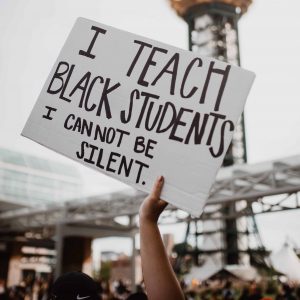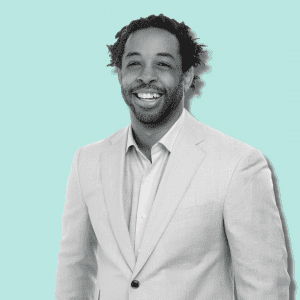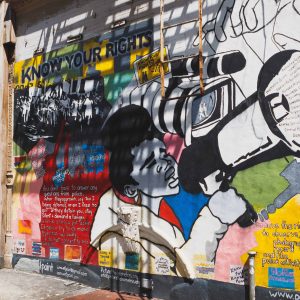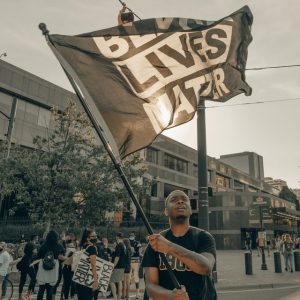
This is Our Moment for Integrated Schools
08/17/2020

Editor’s Note: Over the next year, we’ll be talking to program alumni, our partners, community members, and education leaders about equity and anti-racism in action. Our hope is to highlight diverse ideas and perspectives that build towards a comprehensive vision for educational equity. This interview has been condensed and edited.
FACING HARD TRUTHS
Nearly a decade ago, Stefan Lallinger was a young teacher who was facing new responsibilities in his New Orleans school. Six years removed from the devastation of Hurricane Katrina, he was one of many new mid-level school leaders across the city who were trying to get a reformed school system on track. The city’s schools faced not only a steep, uphill climb in terms of academic outcomes but also rapidly changing demographics within a highly segregated system. He needed support.
Lallinger shares, “A friend told me about this program from Leading Educators that, at the time, was designed for mid-level leaders who were in the same position that I was: we were asked to take on a bunch of responsibilities that we hadn’t been trained for. That was exactly what I needed at the exact right time. It offered not just real hands-on training, but it also offered a cohort of colleagues who were in similar boats.”
That was just the beginning of a dynamic leadership career for Lallinger, who now heads the Century Foundation’s Bridges Collaborative, which launched this past May. As director, he’s steering an ambitious twenty-first century initiative to organize school systems, charter schools, and fair housing advocates to ignite a nationwide movement for integrated schools and diverse neighborhoods.
This fight is personal for Lallinger. In 1954 his grandfather Louis L. Redding helped argue the landmark Brown v. Board of Education case that outlawed school segregation. In 2020, Lallinger says, “Nearly one-fifth of public schools have almost no children of color, while another one-fifth have almost no white children.” With those data and national conversations about overcoming anti-Blackness as the backdrop, Lallinger spoke with me and Leading Educators CEO Chong-Hao Fu about integration today and racial equity in schools.
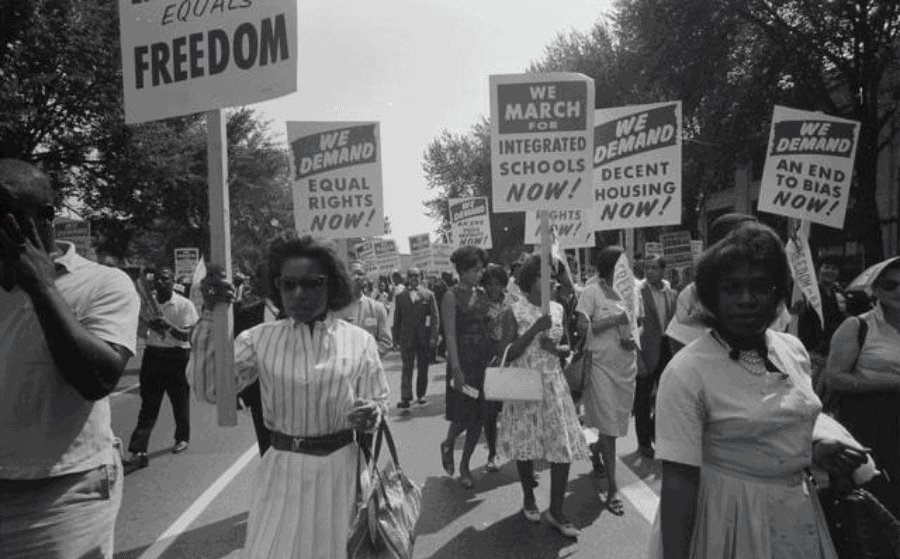
Defining Equity
Many in the education sector commit to equity in their mission statements and core values, but it’s difficult to find a commonly-held definition of what that means. Lallinger argues that is because the way we define the root causes of inequity and therefore propose solutions depends on the frame of reference:
“I’ve been thinking about this question, ‘What does inequity look like in education from the 10,000 foot level?’ Inequity is baked into our educational system in the same way that it’s baked into society. It starts with the way that we as a society decide who gets to go to what school and how we allocate resources to those schools. About 75% of American children who go to public school attend a school based on where they live.
But we also know that for generations we have determined where people live and go to school in ways that are segregative and consciously created to separate people along lines of class and of race. No one should be surprised that if kids go to school in their neighborhood, and their neighborhood is segregated, their schools will be the same way.”
Disentangling Root Causes
For Lallinger, this imbalance of people and resources plays out in vivid ways. As a school leader in New Orleans, he says his team had obstacles to surmount before even considering learning because of endemic poverty in the neighborhoods from which many of their students came. Because of the relationship between property taxes and school funding, poverty is a consequential factor. He shares:
“Taking out the variable of race for a second, many schools in America will never have a student who is dealing with homelessness because of where they are located. In my last year as a school leader, we started the year with six students who were homeless, and we had one social worker. Think about all of the things that a student who is homeless needs in order to be successful. First of all, housing security is not a guarantee in New Orleans, right? Our social worker also needed to make sure those families had a secure way to be fed beyond our breakfast and our lunch programs, so students took food home on the weekends. We helped them access adequate facilities for hygiene, to clean their uniforms, and so on. That’s just one school and six families. But it’s a real issue that comes when 96% of your students qualify for free and reduced lunch.”
To be clear, Lallinger sees these needs as wholly avoidable systemic problems. It’s why he believes that the change many are calling for now requires fundamental shifts to how society operates. “The question really is, are we willing to confront the way that we have set up our districts and our schools in a way that actually leads to structural differences? Because without structural differences, we’re talking about margins, and that doesn’t match the rhetoric and the language that I’ve heard from people,” he reflects.
Reimagining the System and Tactics
As previously mentioned, school integration has been in the public discourse for nearly 70 years. It was even the subject of a standout moment at the Democractic presidential debate in July 2019. Why then isn’t integration an issue that inspires more action? Part of the reason is the white flight and disinvestment in urban cores that followed formal desegregation in the ‘60s and ‘70s. Those with the power and resources to opt-out of the local system—who were more likely to be white—concentrated themselves in places where racial and class similarity could work to their benefit. Essentially, lower-funded and therefore lower-performing schools weren’t their problem. That’s why Lallinger says there’s a big role for people, “particularly people of needs, people with power, and people with wealth.”
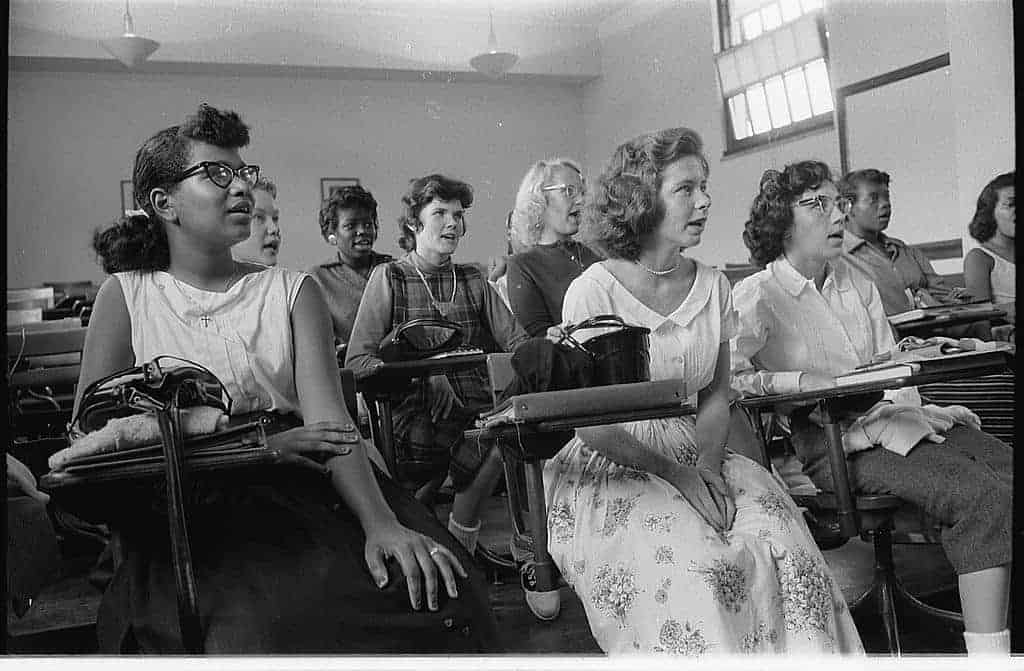
“If in their own communities they say, ‘I demand diverse schools for my kids,’ you would start to see things like boundary lines change. If ordinary people stood up and said, ‘This doesn’t make sense. We have two segregated schools in our district that could be two integrated schools,’ that would be a big lever for change. People have to recognize that if we continue to perpetuate current policies, and if the next generation continues to go to school with people who do not look different or come from different backgrounds than they do, the problems facing the next generation appear to be intractable. They will not be solvable if folks don’t work together across lines of difference.”
This is not a new discussion, and past attempts at integration caused irreparable harm in communities of color for subsequent generations. Lallinger believes we have new opportunities to get it right because people better understand what went wrong and how our tactics could shift. He points out, “Dr. King used to frame the difference between desegregation and integration in some of his speeches. He would often say—in words much more eloquent than mine—desegregation was about removing the structural barriers for children to be able to go to school together and for people to be able to live together. But, integration was much more additive, not just the removal of barriers. Integration is folks coming to the table and respecting and valuing each other enough to share the ideas and the knowledge that they both bring to make a sum that is greater than the parts. That’s the piece that never quite happened in this country.”
Building Coalitions
Inaction around integration would be setting up our kids for a failed future. That’s what inspires Lallinger most about the potential of his new project, The Bridges Collaborative.

“The Bridges Collaborative, I think, is appealing to folks across the country because we’re bringing partners from all across the country, in all kinds of different contexts, to tackle different pieces of the puzzle. Whether you’re talking about enrollment, district lines, the curriculum they use, or the ways they foster an inclusive environment, there are ways for people to use their expertise and leverage the strengths of different partners. To me, there’s nothing better than practitioner-led learning with really smart ways of collaborating and folks who have different pieces of the pie, all folks who are equally committed to making the conditions for the next generation positive, integrated, inclusive, and rigorous. And it doesn’t cost school districts anything to be able to do this.”
For Lallinger, several approaches carry real potential, but they must account for the specific needs of communities. He calls to mind a proposal from Sen. Chris Murphy and Rep. Marcia Fudge called “The Strength in Diversity Act” that would allocate federal funds for localities to study segregation in their given context to then propose solutions that are customized rather than one-size-fits-all. But, he cautions, “The federal government can only play so much of a role as we know it accounts for about 10% of education funding across the country. There are also huge roles to be played by states and local communities.”
That’s the piece that must look different in 2020 and beyond. Lallinger reflects, “There are a lot of people of color, particularly Black folks, in this country who are disgusted by the way that our government went about desegregating schools in the sixties in the wake of Brown vs. Board of Education for good reason. Number one, it happened way too slowly. Number two, when it did happen, it happened to the exclusion of many Black professionals. Black principals and Black teachers lost their jobs and weren’t part of the newly integrated schools in certain localities. When you lose Black educators and principals, you also lose an approach to teaching a curriculum of pedagogy that values civic participation in our democracy and standing up for your value as a Black person.”
Still, he’s hopeful. “In 2020, we have an opportunity to do this in a way that is completely different than folks tried in the ‘70s and ‘80s. We’ve learned a lot about school integration since then. We can learn from our mistakes and have a new consciousness about what it takes to actually bring people to the table as equal partners with equally valid ideas.”
The Role for Leaders & School Systems
One way Leading Educators’ work has evolved since Lallinger was a fellow is that we place greater emphasis on providing content-rich experiences and supporting educators to understand the tradeoffs for equity when they make instructional choices. When asked about the connection between classroom experiences and large scale issues like resource distribution and districting, he stresses the inadequacy of the training most educators get throughout their career. He explains, “We don’t think about the tangible and concrete ways that we actually need to train people that might exist outside of what you would get in a master’s program in a higher education setting.”
So what would that training and support for educators entail? Lallinger says it has to start with shifting educator mindsets and setting the expectation that Black students can learn.
“I have to wonder if folks actually believe that we can do education differently. School systems have to think about how we can create places that are truly inclusive for all students. And it’s a tall task. I do want to be clear about that. But it’s worth it.”
He continues, “School integration was a cornerstone of the Civil Rights Movement, but folks lost hope. You saw a big movement in the Black community towards self sufficiency and Black empowerment in ways that preserved Black-only spaces. There’s a place for that. I went to an all-Black church growing up. It was highly empowering and important to who I was as a person growing up. But there’s a difference between my attending an all-Black church that had members from all across the community come together regularly for positive and uplifting rituals and what we see in our inner cities, which is often under-investment in schools with a teaching corps that is often young, and many times does not look like their students. When we’re talking about public education, I think the best solution for our society as a whole is a truly inclusive and integrated school system.”
So what does accountability look like? How can we ensure that “this time is different?” Lallinger acknowledges that while it isn’t as simple as waving a magic wand, there are actions at the state and national levels that could help set the conditions for action. But at the local level, there has to be the political, professional, and personal will to act. He says, “That looks like ordinary citizens standing up and having these conversations and making sure they don’t die.”
Lallinger believes there’s real energy right now that presents a critical opening for change to happen.
“For many of the folks in power, integration has felt like an untouchable issue, but this is a window in time in which we can touch this issue. People want to address this issue. Let’s take advantage of the moment, and let’s do it now.
“This is all complicated by the fact that schools are preoccupied with reopening concerns, and they are hearing mixed messages from states and the federal government about reopening. So, there’s a lot happening. What we’ve also seen is that school integration and where kids go to school isn’t as top of mind for folks when they’re learning from their living rooms, which makes sense. But there might be an opportunity to capitalize on the fact that when we do come back to school, we can come back to school and set it up in a way that’s different. We have to try.”

Apply to the Bridges Collaborative
The Bridges Collaborative is seeking 50 school districts, charter schools/CMOs, and housing organizations to be part of the Bridges Collaborative Cohort. Prospective organizations will enroll 2-5 organization representatives for a two-year program starting in Fall 2020.
The application deadline for the Bridges Collaborative Cohort is Friday, August 21 at 11:59 PST. Click to learn more.
Curious About What You Read?
Check out these other pieces that reference Stefan’s work:
- Op-Ed in USA Today by Bridges Collaborative Director Stefan Lallinger on School Integration in the George Floyd Era
- Q&A in Chalkbeat about the Bridges Collaborative
- TV Interview on NYC Fox 5 with Bridges Collaborative Director Stefan Lallinger on the Collaborative and its Goals
- “Why the Bridges Collaborative is So Important to Me” by Bridges Collaborative Director Stefan Lallinger



